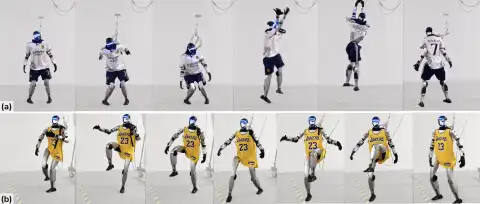Robots master the movements of sports stars thanks to new technology

Scientists at Carnegie Mellon University, in partnership with NVIDIA, have created the ASAP (Aligning Simulation and Real Physics) system, which significantly improves the coordination of robots. Now they can both simply walk and run, and repeat complex movements of athletes, including throws in the style of Kobe Bryant and the famous rotations of Cristiano Ronaldo in the air during the celebration of goals with a cry of "Siu".
ASAP technology uses 2-stage learning: first, movements are analyzed from video recordings and simulated in a digital environment, and then adapted to the physical characteristics of the robot. To accurately convey movements, a delta model is used, correcting deviations between simulation and reality.

Previous methods either set strict parameters, limiting the realism of movements, or made them overly cautious. ASAP maintains a balance between naturalness and efficiency, helping androids move smoother. In the future, the developers want to abandon the motion capture mechanisms, replacing them with video cameras with sensors, which will speed up training and make it even more accurate. This opens up new possibilities for creating robots that can move almost like people.
ASAP technology uses 2-stage learning: first, movements are analyzed from video recordings and simulated in a digital environment, and then adapted to the physical characteristics of the robot. To accurately convey movements, a delta model is used, correcting deviations between simulation and reality.

Previous methods either set strict parameters, limiting the realism of movements, or made them overly cautious. ASAP maintains a balance between naturalness and efficiency, helping androids move smoother. In the future, the developers want to abandon the motion capture mechanisms, replacing them with video cameras with sensors, which will speed up training and make it even more accurate. This opens up new possibilities for creating robots that can move almost like people.





There are no comments yet :(